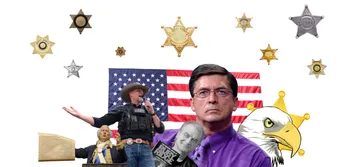After a nine-month trial, a jury convicted Gregory "Boy Boy" Bell of selling crack cocaine, three sales totaling five grams and carrying a sentence in the five-year range.
More importantly for Bell, the jury acquitted him of 10 serious charges, including a trafficking conspiracy and a racketeering conspiracy that would have meant decades in prison.
At sentencing, the judge ruled that Bell had engaged in the exact same crack cocaine conspiracies that the jury had rejected. The five grams of crack became 1,500 grams, and the judge sentenced Bell to 16 years, not the expected five.
Critics object that the use of “acquitted conduct” to justify longer sentences empowers prosecutors and judges to ignore the judgment of the jury, to base sentences on facts rebuffed by the citizens in the jury box.
Those critics include one of Bell’s jurors and Court of Appeals Judge Brett Kavanaugh, the current nominee to the U.S. Supreme Court.
“Allowing judges to rely on acquitted or uncharged conduct to impose higher sentences than they otherwise would impose seems a dubious infringement of the rights to due process and a jury trial,” Kavanaugh wrote about Bell’s case in 2015.
Kavanaugh noted that he and his colleagues on the appeals court were powerless to overturn the sentence. They are required to follow the rulings of the U.S. Supreme Court, which has allowed acquitted conduct to be a factor in sentencing. In the meantime, Kavanaugh reminded trial judges that, when asked to use acquitted conduct to increase sentences, they can just say no.
“Boy Boy” Bell was an alleged member of the Congress Park Crew, which prosecutors described as a loose-knit street gang in southeastern Washington, D.C. in the 1990s and 2000s.
In 2005, after a five-year FBI investigation, federal prosecutors brought wide-ranging indictments against Bell and 17 others. Twelve defendants pled guilty or were convicted before the big trial of the remaining six defendants began in February 2007.
For eight months, jurors watched and listened as prosecutors and defense lawyers gave opposing versions of life in the Congress Heights neighborhood, a 10-minute drive across the Anacostia River from Capitol Hill.
The trial did not go the prosecutor’s way. After weeks of deliberation, the jury rejected all the conspiracy charges. They returned 17 convictions, including a murder conviction for David “Cool Wop” Wilson. Antwuan “Big Ant” Ball, the alleged gang leader who had been charged with murder, trafficking and racketeering, was convicted on one count of selling a half-ounce of cocaine. The jury convicted Bell on the three counts of drug distribution totaling five grams.
At sentencing, prosecutors asked the judge to rule that Bell was part of a conspiracy to traffic 1,500 grams of crack.
Bell’s lawyer countered that the jury had rejected all the conspiracy charges. In a sentencing memo, he criticized the prosecution’s reliance on crack addicts or snitches seeking time off lengthy sentences. Dozens of these witnesses gave the same perfunctory, vague and almost identical testimony, which Bell’s lawyer summarized like this in the memo:
"What about Boy-Boy?"
"Boy-Boy sold me weight."
“Well, when did he sell you weight?"
"Well, about this time period."
"Well, how often would he sell you?"
“It depends."
Jurors had rejected those witnesses, and to rely on them to increase a sentence is simply unfair, the lawyer wrote.
U.S. District Court Judge Richard Roberts sided with the prosecution and handed down the 16-year sentence. Countless photos and countless witnesses showed Bell and his co-conspirators associating in Congress Park, he said.
“For over a decade you were regularly pumping poison in substantial quantities into this community,” Roberts said. “You did it with many others, multiplying the number of strung-out people you helped keep strung out. You lined your own pockets and lessened the lives of countless others.”
Upon learning that the prosecution sought long sentences based on evidence the jury rejected, one of Bell’s jurors wrote an incredulous letter to Roberts, reminding the judge that the jury had tossed out the conspiracy charges due to the prosecution’s lack of hard evidence, The Washington Times reported.
“It seems to me a tragedy that one is asked to serve on a jury, serves, but then finds their work may not be given the credit it deserves,” wrote Jim Caron, a retired economist at the U.S. Department of Agriculture."These defendants are being sentenced not on the charges for which they have been found guilty but on the charges for which the District Attorney's office would have liked them to have been found guilty.”
Law students presented with this case respond with disbelief, said Doug Berman, an Ohio State law professor and expert on sentencing.
“I’ve had students accuse me of making this up,” Berman said.
Acquitted conduct and its legal siblings — dismissed conduct and uncharged conduct — are contentious subjects in the arcane world of federal sentencing law.
The tension arises from different standards of proof used at trial. Juries convict after finding proof beyond a reasonable doubt. At sentencing, judges use the preponderance of the evidence, a standard requiring more than 50 percent of the evidence to prove something, like the tip of a scale.
The standard makes sense in discretionary sentences, used in varying degrees in all state and federal courts. Legislatures set ranges for criminal sentences: probation to 20 years in prison, for example, or, five years to life. In fashioning a precise sentence within a wide range, a judge weighs aggravating and mitigating factors such as criminal record, education, victim testimony, family life, military service, abuse or neglect as a child and work history.
Dating back at least to 1949, the U.S. Supreme Court has allowed judges to use uncharged conduct to increase sentences. In later rulings, the Supreme Court explicitly allowed federal judges to make findings of fact that include acquitted conduct at sentencing.
But the law is muddled. The Supreme Court began to limit the effect of uncharged and acquitted conduct in 2000, but more recent decisions have undercut those cases. In Kavanaugh’s words, the Supreme Court lurched toward sentencing reform only to back away.
The court has since avoided the issue. In 2014, the Supreme Court declined to hear the cases of three Congress Park co-defendants: Joseph “JoJo” Jones, Desmond “Dazz” Thurston, and Antwuan “Big Ant” Ball. Each had his sentence tripled or more based on allegations the jury found unpersuasive.
Justices Antonin Scalia, Clarence Thomas and Ruth Bader Ginsburg wanted to hear those cases. In a dissent, they said the time had come to confront acquitted conduct: “This has gone on long enough.” It takes four justices to accept a case.
If Kavanaugh tips the balance, it will be too late for Gregory “Boy Boy” Bell, who has been locked up since his arrest in 2005. He is scheduled to be released on Sept. 4.

